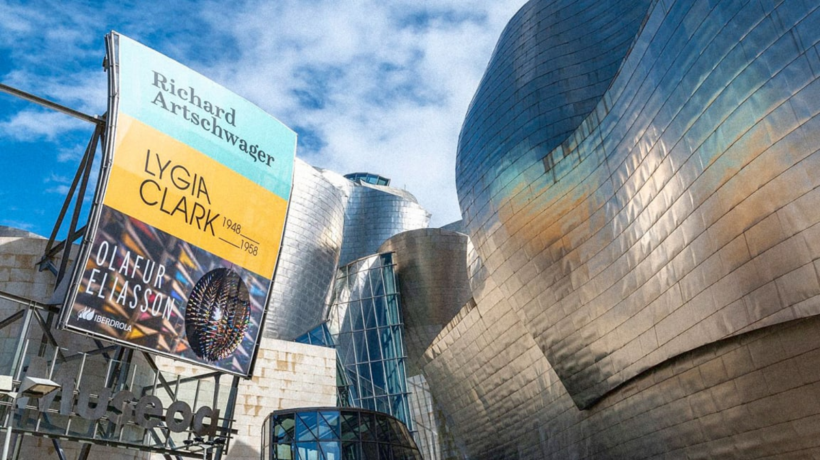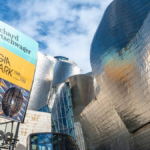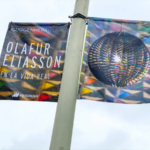Newly installed banners at the Guggenheim Bilbao and around its home city of Bilbao, Spain, have been treated with a special coating called Pureti Print, which turns them into air purifiers. The treatment is based on photocatalysis, a natural process with an air purifying effect similar to that of trees.
Medical and technical products company Estudios Durero implemented the treatment for the Guggenheim Bilbao campaign, which advertises a newly installed Olafur Eliasson exhibition at the museum. The exhibit, Olafur Eliasson: In Real Life, aims to bring “some of today’s most urgent issues” to the attention of visitors and asks them to reflect on their understanding of the environment through use of natural materials like moss, fog, and glacial ice. (Yes, it’s currently open during the coronavirus pandemic.)
NASA collaborated on the development of the purifying technology, which was first used in Spain in 2015 for a Shiseido ad campaign in Madrid (although it wasn’t yet a registered trademark). The treatment is essentially a clear top coat that can be applied to outdoor banners, giving them an additional functional component (at an additional expense) without changing their appearance.

The photocatalysis process works by removing pollutants, bacteria, mold, and bad odor from the air through a light-driven chemical reaction process, or photooxidation, which turns water vapor and oxygen in the air into cleaning agents. Estudios Durero claims that about 0.3 square meters of Pureti Print has the equivalent purifying effect of one adult tree. According to the museum, this ad campaign has an air-purifying effect equivalent to more than 700 trees—which improves the air quality around the museum.
The director general of the museum, Juan Ignacio Vidarte, sees the campaign as part of its larger commitment to combat climate change. “Just as we are cutting down power consumption thanks to the change of the lighting systems in the museum galleries, the possibility of purifying the air while acquainting our audiences with our art program was a great chance,” he says.
It’s also a great opportunity to show the positive effects of cross-disciplinary design. Just because graphic design often has 2D applications doesn’t mean that designers have to think in only two dimensions. In a broader sense, this campaign shows that even an ad, built to hawk products or services, can be an agent for positive environmental change.
Originally published on fastcompany.com









